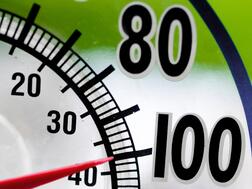As anyone who pays an electricity bill can tell you, air conditioners can use a tremendous amount of electricity. When that increased usage is applied across a large population, such as the New York, Madison, or Los Angeles metropolitan areas, the power grids serving those areas are put under a tremendous amount of strain.
Overcoming Voltage Fluctuation Obstacles in the Summer
The Insider’s Guide to Fighting Summer Humidity
Dehumidifier Corporation of America (DCA) designs dehumidification systems for a wide range of applications. We have provided dehumidification solutions to hotel and motel chains, homeowners and manufacturing facilities where the control of relative humidity is critical. No matter what kind of building you operate, summer humidity can pose a real problem. High humidity is a particular threat for facilities that store sensitive items that can be ruined by moisture, like food or powdered products that take on moisture.

Humidity is most-often measured in relative terms. Relative humidity is the ratio of the absolute humidity to the highest possible absolute humidity. A 100% relative humidity signifies total saturation, leading to the formation of rain droplets. People are most comfortable at a relative humidity 40-60%: any higher and natures air conditioner will slow down sweat from evaporating at an efficient rate and therefore the air will feel hotter to the body than it actually is.
Why is Humidity Harmful?
In addition to discomfort, humidity can also lead to structural problems, causing mold and mildew growth. Excess moisture can rot wood framing, which reduces structural integrity and provides a breeding ground for mold and pests. This is dangerous for occupant health because mold and mildew are known to cause respiratory problems, allergic reaction symptoms, nervous-system disorders and even depression.
Limitations of Air Conditioners When Combatting Humidity
A.C. systems effectively cool indoor spaces and remove some moisture, but they also raise the relative humidity indoors. This often results in mold and mildew accumulation in air moving duct work, which results in poor indoor air quality and “sick building syndrome”. ASHRAE standards now stipulate that all buildings must dehumidify outdoor air before sending it to the HVAC system.
Solve Your Summer Moisture Challenges with DCA
We can help you improve the moisture control of your system and get summer moisture under control, ultimately saving you money and energy in the long run. With the right equipment, it is possible to achieve optimal climate control year-round for the products and people inside your facility.
Contact us today to learn more about our services, or visit our website to request a quote.
Want to learn more troubleshooting tips ?
We’ve only looked at three common problems here, but there are a host of other issues that can cause dehumidifier malfunctioning.
To read more about what can go wrong with dehumidifiers and learn how to fix problems quickly and efficiently, download our free dehumidifier troubleshooting guide today.
Download our Free Troubleshooting Guide
Looking for additional information?
View All Resources



